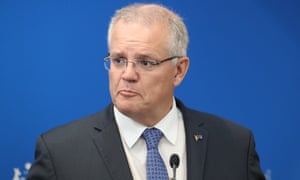This is not the climate policy solution that the government wants us to thinks it is
The Coalition government has today released its climate policy for the upcoming election.
Not much could have been expected from the government given that the prime minister has only been in the role six months, and not much was delivered.
There is not a lot of detail around the total package, the $3.5bn cash splash. What we have is enough to make clear that this is not the climate policy solution that the government thinks it is.
Not much could have been expected from the government given that the prime minister has only been in the role six months, and not much was delivered.
There is not a lot of detail around the total package, the $3.5bn cash splash. What we have is enough to make clear that this is not the climate policy solution that the government thinks it is.
What is the emissions reduction fund?
The emissions reduction fund is a pool of money that the commonwealth government uses to buy “carbon abatement” from private parties around the country. This carbon abatement occurs when an organisation takes some action to avoid or reduce emissions of greenhouse gases. For instance, a waste company could capture and burn off the methane from its landfills, or a farmer might draw greenhouses gases from out of the atmosphere, by planting trees. At present 26 different methods of abating our emissions are at play under government contracts.The current funding allocated to the scheme is $2.55bn. About $2.33bn of that money has been allocated to projects already over the ERF’s eight auctions. A little over $480 million has been paid to those running the projects so far.
The government claims that the fund will provide 193 million tonnes of abatement between 2015 and 2028, an average of about 14 million tonnes per year. Those numbers may seem big, but that’s about one third of the emissions per year from Australia’s largest emitter, AGL.
Monday’s announcement
Among a suite of measures announced by the government on Monday was a $2bn boost to the emissions reduction fund, as well as a rebrand. The climate solutions fund will use the same mechanism as the emissions reduction fund and will spend $200m per year over the next 10 years to offset our emissions.If that funding arrives, and the average price stays the same as recent auctions, that mechanism will deliver approximately 90 million tonnes of abatement in the next decade, with a further 60 million tonnes being delivered after 2030.
That’s a big if. While the government’s headline figure is $2bn, at most only $600m of that will be delivered in the next term of government.
What’s wrong with the emissions reduction fund?
Ignoring the fact that there are many better and more legitimate ways to reduce our greenhouse gas emissions than by direct investment from the government, the ERF fails on its own terms through a series of bespoke issues across the methods.These have been reported over the past four years and provided a picture of a deeply flawed scheme.
For example, research published by myself and a colleague at Melbourne Law School and reported in the Guardian found that most projects contracted under the ERF’s landfill gas method predate the scheme – some by more than a decade. The fund is supposed to drive new abatement. This is expressly in the goals of the scheme itself. The ERF provides little benefit to the environment by funding these old projects, and the funding is rapidly converted into shareholder dividends.
The revegetation methods while generally robust will be dwarfed by land-clearing elsewhere in Australia. The ERF has secured commitments to deliver 111 million tonnes from revegetation projects across Australia over 2015-2028. Research out of ANU estimates that Australia’s recent land-clearing rates have been releasing up to 38 million tonnes per year. We wouldn’t need to invest this money at all if Australia could get its land-clearing under control.
Another story on Monday revealed that major polluters such as the Granny Smith Gold Mine are being paid by the ERF to switch out one form of fossil fuelled power for another. This is occurring even though the proponents themselves indicated that the funding played no role in their decision to upgrade. Again, this runs counter to the express goals of the fund, which is supposed to drive new emissions abatement opportunities, rather than subsidise project activity that may have occurred anyway.
These problems have pervaded the ERF and will continue into the new climate solutions fund.
Australia has no need to go down this route
Australia is blessed with opportunity when it comes to dealing with climate change. We are the sunniest and windiest inhabited continent in the world, with ample opportunities to build our renewables as well as the necessary infrastructure to support them (such as batteries).We need to do so much more than accounting tricks and the direct purchase of spurious abatement.
The IPCC’s special report on a 1.5-degree target, released last year made it clear that to have a moderately safe climate, things will be far easier if we start now. The precipitous declines in our emissions that will be needed if we wait until after 2030 are something that I struggle to believe possible.
But if we start now, a relatively safe climate future is achievable. Despite the hyperbole thrown around in certain sectors of the media, and by certain politicians, it is not economy-wrecking, too hard, or not worth it.
More importantly, it is entirely necessary. The world where we choose not to act to prevent the worst of climate change is not looking great.
• Tim Baxter is an associate of the Australian-German Climate and Energy College and a fellow of Melbourne Law School

No comments:
Post a Comment